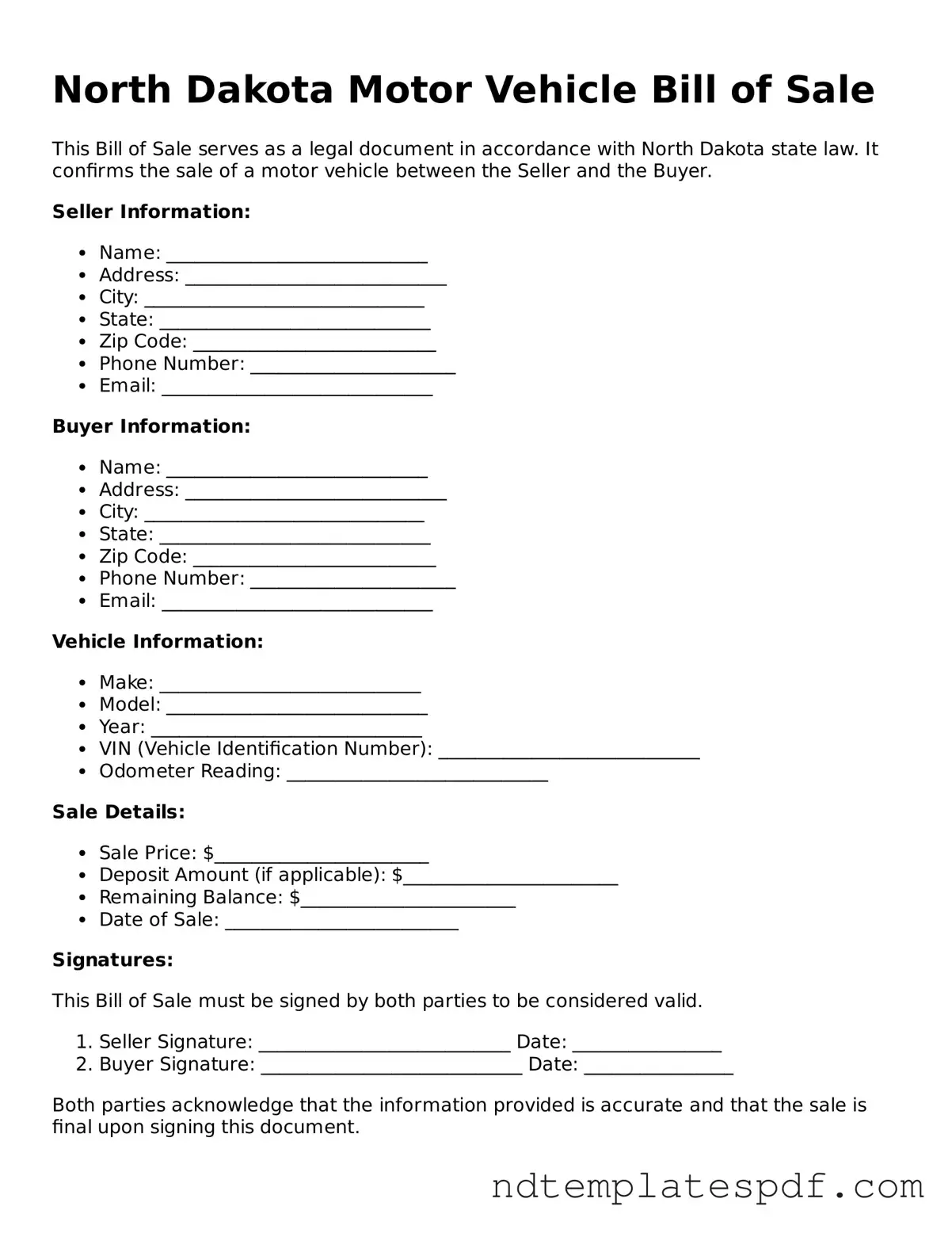Detailed Steps for Using North Dakota Motor Vehicle Bill of Sale
Once you have the North Dakota Motor Vehicle Bill of Sale form in hand, it’s time to fill it out accurately. This form is essential for documenting the transfer of ownership of a vehicle. After completing it, both the buyer and seller should keep a copy for their records. Now, let’s get started on how to fill out the form.
- Begin by entering the date of the sale at the top of the form.
- Next, fill in the seller's information. This includes the seller's full name, address, and contact number.
- Then, provide the buyer's information. Similar to the seller's section, include the buyer's full name, address, and contact number.
- In the vehicle description section, include the make, model, year, and VIN (Vehicle Identification Number) of the vehicle being sold.
- Indicate the sale price of the vehicle in the designated area.
- If applicable, note any trade-in details or additional agreements related to the sale.
- Both the buyer and seller should sign and date the form at the bottom to confirm the transaction.
After you have completed these steps, make sure that both parties keep a signed copy of the bill of sale. This document serves as proof of the transaction and is important for future reference.
